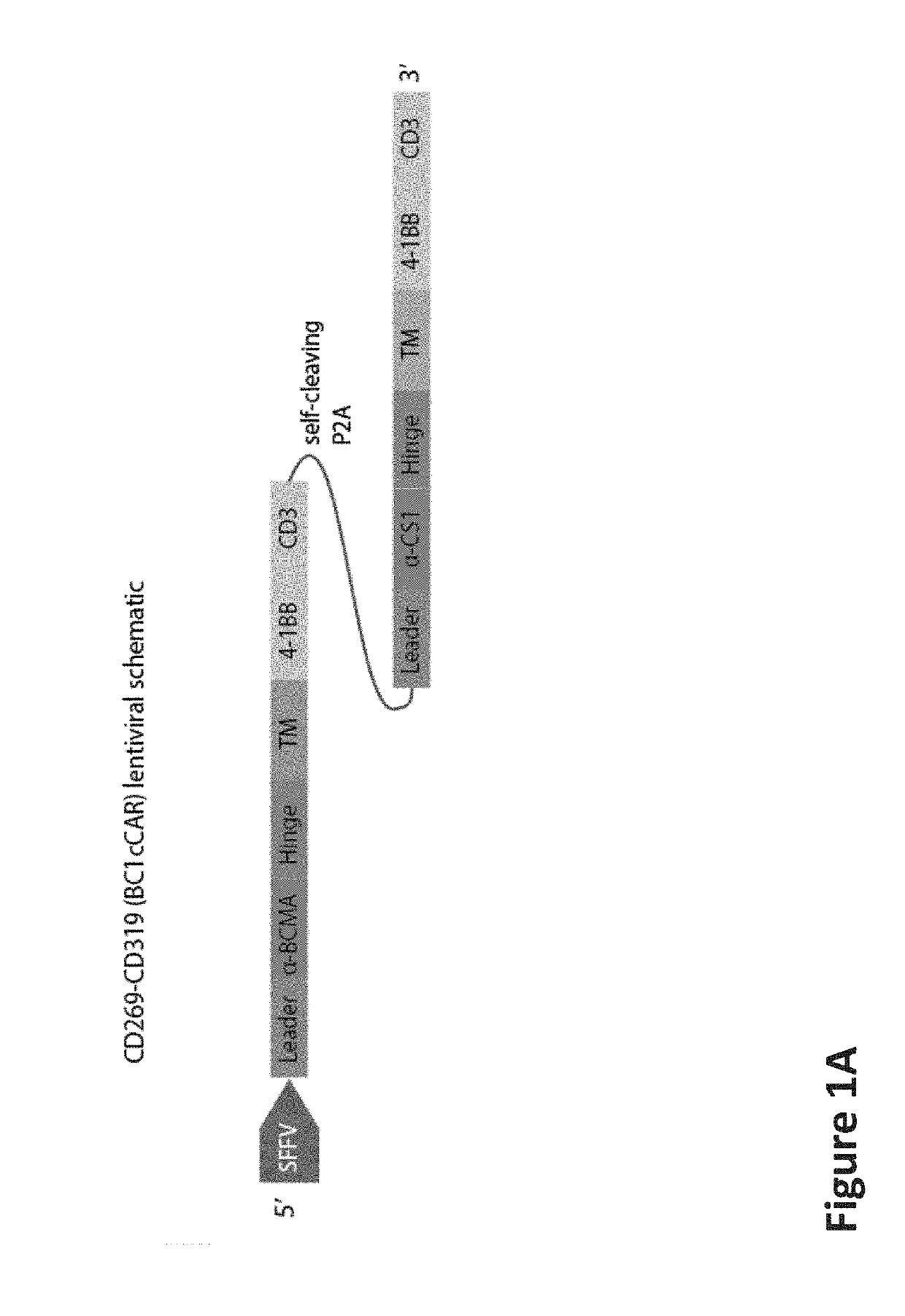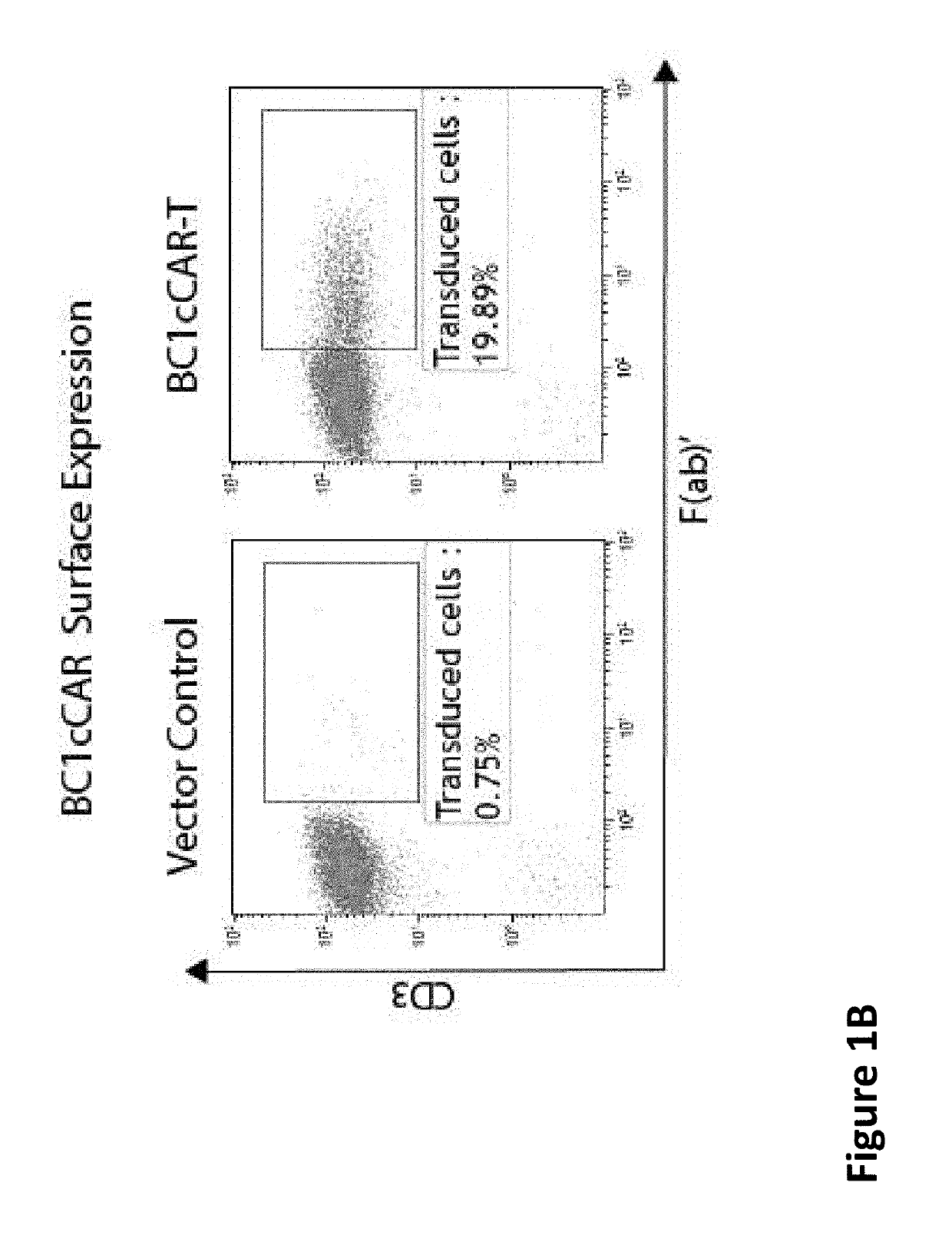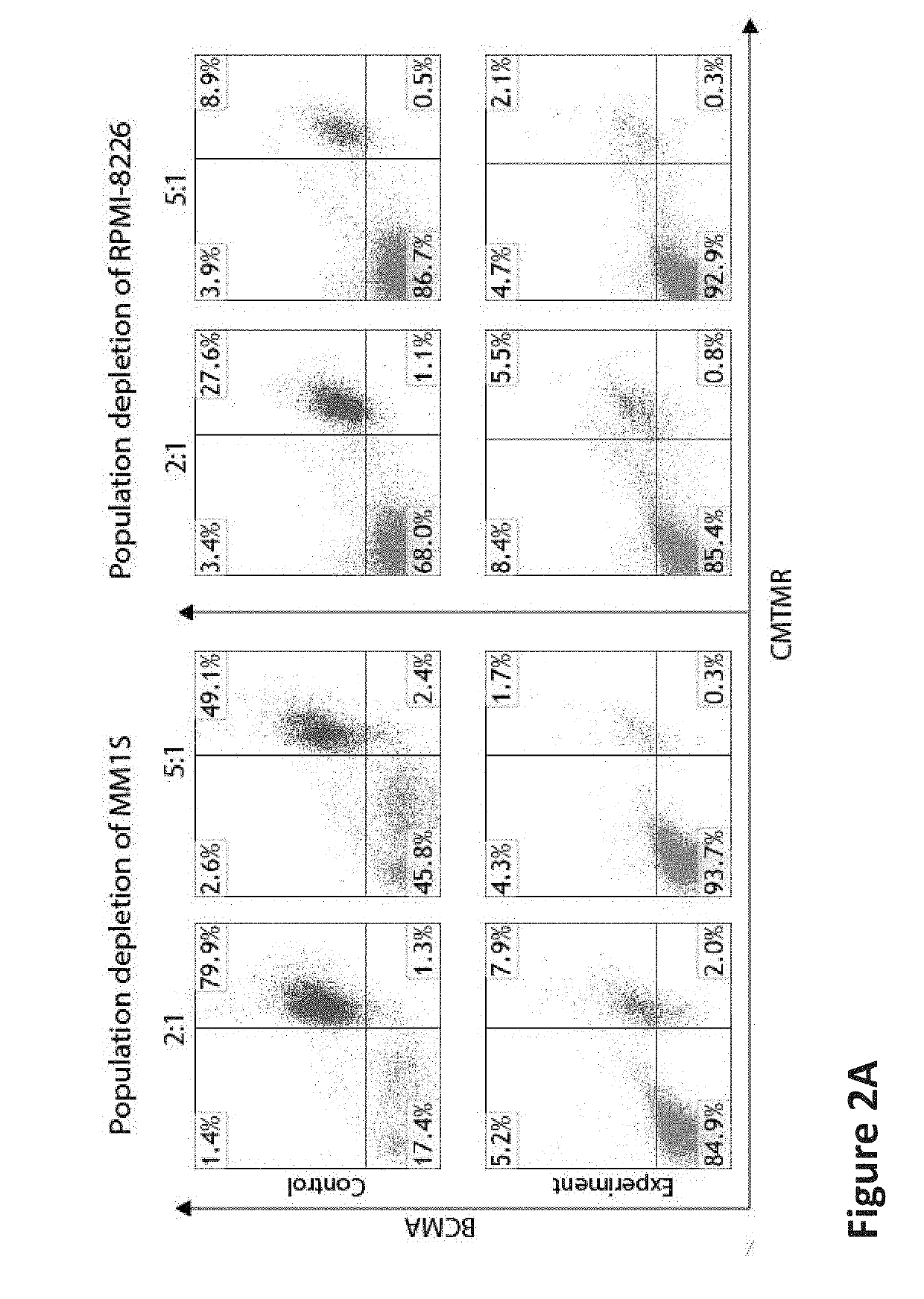COMPOUND CHIMERIC ANTIGEN RECEPTOR (cCAR) TARGETING MULTIPLE ANTIGENS, COMPOSITIONS AND METHODS OF USE THEREOF
a technology of compound chimeric antigen receptor and composition, applied in the direction of immunoglobulins, peptides, drug compositions against animals/humans, etc., can solve the problems of limited efficacy, hinder the broader adoption of car therapy approach, and the application of car therapy to soft tissue tumors has not yet been well established, so as to improve the safety of gene therapy
- Summary
- Abstract
- Description
- Claims
- Application Information
AI Technical Summary
Benefits of technology
Problems solved by technology
Method used
Image
Examples
examples
[0603]BCMA-CS1 cCAR Targeting Plasma Cell Diseases Such as Multiple Myeloma Generation of BCMA-CS1 cCAR (BC1cCAR) T-Cells
[0604]The BC1cCAR construct is a 2-unit CAR composed of a complete BCMA-CAR fused to a complete CS1-CAR by a self-cleaving P2A peptide, enabling independent expression of both CAR receptors separately on the T-cell surface (FIG. 1A). Expression assayed by FACS revealed distinct transduced cells (FIG. 1B). A leader, a scFv, a hinge domain (H), a transmembrane domain (TM), a co-stimulatory domain (CD28 or 4-1BB) and the intracellular signaling domain CD3 zeta (CD3) are included in each CAR unit. A strong spleen focus forming virus promoter (SFFV) and a CD8 leader sequence were used for efficient expression of the BCMA-CS1 cCAR molecule on the T-cell surface.
BC1cCAR T-Cells Specifically Lyse BCMA+ and CS1+ Myeloma Cell Lines
[0605]To assess the cytotoxicity of BC1cCAR T-cells, we conducted co-culture assays against myeloma cell lines: MM1S (BMCA+CS1+), RPMI-8226 (BCMA...
example
[0779]The structural organization of GD2 super1 CAR shown in FIG. 60A. Links by P2A and T2A schematic to generate a super1 CAR showing a CAR, GD2 CAR equipped with 4-1BBL and IL-15 / IL-15sushi in a single construct. The construct consists of a SFFV promoter driving the expression of three segments, CAR, 4-1BBL and IL-15 / IL-15sushi. Upon cleavage of the linkers (P2A and T2A), the CAR, 4-1BBL and IL-15 / IL-15sushi split and engage upon a target(s). CAR has scFV, hinge region, transmembrane domain, costimulatory domain (including, but not limited to, CD28 or 4-1BB) and intracellular signaling, CD3 zeta chain. 4-1BBL or IL-15 / IL-sushi or both provides a synergistic effect of T or NK cell activation and persistency or anti-tumor activity with CD28 or 4-1BB.
[0780]In order to evaluate the in vivo anti-tumor activity of various GD2-targeting CAR constructs, we developed a xenogeneic mouse model using NSG mice sublethally irradiated and intravenously injected with luciferase-expressing Y79 ret...
PUM
 Login to View More
Login to View More Abstract
Description
Claims
Application Information
 Login to View More
Login to View More - R&D
- Intellectual Property
- Life Sciences
- Materials
- Tech Scout
- Unparalleled Data Quality
- Higher Quality Content
- 60% Fewer Hallucinations
Browse by: Latest US Patents, China's latest patents, Technical Efficacy Thesaurus, Application Domain, Technology Topic, Popular Technical Reports.
© 2025 PatSnap. All rights reserved.Legal|Privacy policy|Modern Slavery Act Transparency Statement|Sitemap|About US| Contact US: help@patsnap.com



